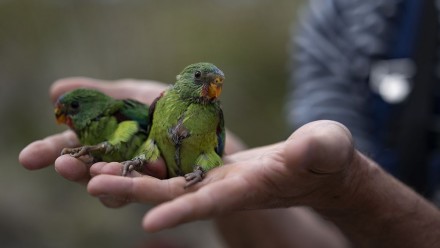Community mining in Eastern Indonesia, livelihood benefits, and environmental impacts
This presentation explores two regions in Eastern Indonesia with significant artisanal mining activity; manganese mining in West Timor and gold mining in South East Sulawesi.
Artisanal and small-scale manganese mining (ASMM) began in Indonesian West Timor in the late 2000s when the global price rose in response to the increasing demand from China, combined with the discovery of high grade manganese ore in the region. Within a few years, manganese mining had become a widespread activity practised by thousands of poor rural farmers. This presentation describes, firstly, work conducted over a two year period in West Timor. The survey found ASMM to be a major form of rural livelihood with up to an estimated half a million people actively engaged in the mining over a wide area during the peak around 2010. The surveys found that despite the scale of the industry, the negative impacts were found to be minimal and ASMM not only complemented seasonal farming practices but also supported further livelihood diversification. These results are then explored in the context of the global and regional rural livelihood development.
In the South East Sulawesi region of Bombana, a gold rush in 2008 brought tens of thousands of people into the upper catchments of the Langkawala and Kasutahi Rivers. These small scale artisanal miners have been reliant on the use of mercury to process gold, resulting in unregulated environmental releases of this highly toxic element into the river systems. This presentation examines mercury fluxes in late phase mining in the Langkowala River and considers the long term risks to the environment and the people who are dependent on the river for their livelihoods.
About the speakers
Rohan Fisher has worked with satellite data and GIS for the last 25 years, initially for CSIRO in Canberra, and subsequently for the Northern Territory government in Alice Springs and Darwin. For the last 13 years he has worked at Charles Darwin University focusing on capacity building and geospatial applications for natural resource management, health information visualisation and good governance in Eastern Indonesia. His current research and capacity building interests are focused on developing innovative 3D data visualization tools and simulation models for exploring landscape processes and complex systems.
Sara Beavis is a Senior Lecturer at the Fenner School of Environment and Society at ANU where she teaches core courses in water science and water management. Her research focusses on the impacts of anthropogenic activities and climate variability/change on catchment hydrology in both inland and coastal systems. Currently, she is working on the transport and fluxes of heavy metals associated with artisanal mining in eastern Indonesia and examining the implications for the environment and livelihoods, particularly with respect to mercury.










